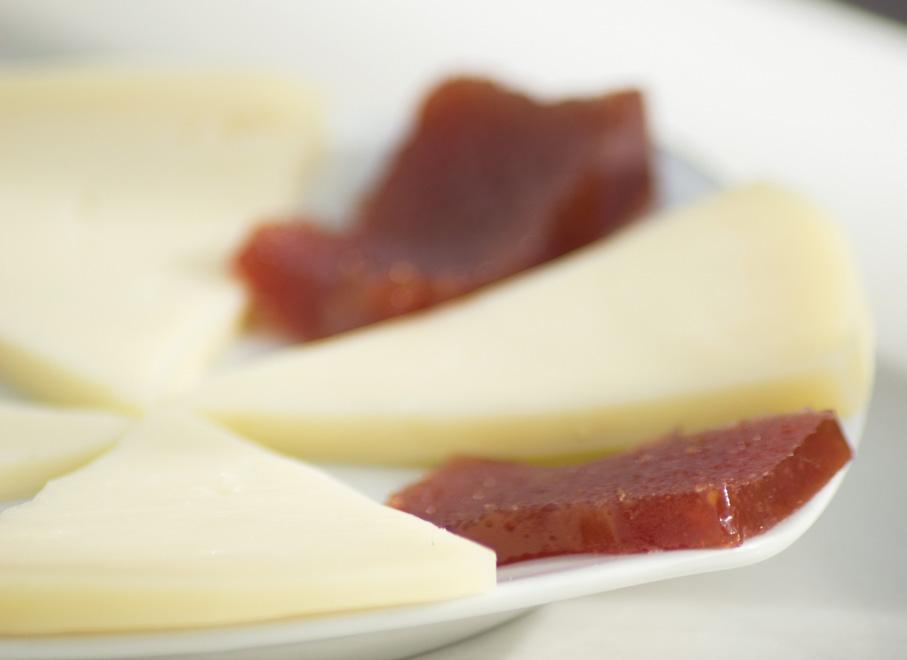
5 minute read
ODE TO OCTOBER
We may not be clinking steins at an Oktoberfest this autumn but there are other compelling reasons to toast the season of mists and mellow fruitfulness this month before we go into hibernation from winter flu.
WORDS BELINDA BECKETT
FALL FOLIAGE
The Costas are more commonly associated with evergreen palms, olive trees and agave cacti but you only have to venture a few kilometres inland for a fix of deciduous autumn leaf colours in 50 shades of flame. Over 30 per cent of Andalucía is covered with protected forests and natural parkland (Cazorla, in Jaén province, is Spain’s largest) and Mother Nature puts on quite a show.
The chestnut woods of the Serrania de Ronda are at their most spectacular in October, burnished to a gold and copper sheen and laden with hedgehog-shaped husks whose sweet nuts are roasted over braziers on every Spanish street corner at this time of year. The quaint villages engaged in the harvest are strung out along a loop route between San Pedro and Ronda an easy drive from Marbella. Better still, exchange four wheels for two – it’s perfect weather to get on your bike and hit the hiking trails.
Don’t forget to catch a falling leaf in October for luck throughout the year. It’s not as easy as you think…

STAG PARTIES
If you go down to the woods tonight you’ll never believe your ears. The month of October is a once-a-year opportunity to experience a berrea – literally, a ‘bellowing’ – the vocal component of the annual stag rut. This awesome autumn ritual goes on after sundown, mostly unseen by humans but definitely heard, when the hills are alive with the guttural roars of horny bucks serenading the local does. Rural villages have cottoned on to the tourist appeal of listening to their love calls by moonlight and organise excursions and picnics around these nocturnal concerts. Los Alcornocales Natural Park just down the road in Cádiz province is one of the four best spots in the region to tick a berrea off your bucket list. However deer are flighty creatures. If you’re hoping to capture National Geographic Magazine quality images of Mr Stag courting Bambi’s mother you’ll need to camp out for a week with a lens of Hubble telescope capacity.

MAGIC MUSHROOMS
Every year, after the first rains of autumn, wild mushrooms sprout from Andalucía’s forest floors and add a delicious seasonal twist to rustic restaurant menus. Think nutty brown boletus, trumpetshaped chanterelles and crunchy saffron milk caps, drizzled with garlic butter, simmered in venison stews or, in the inventive kitchen of Al-Andalus in my village of Los Barrios, whipped up with sugar and eggs into sweet mushroom flan!
But if the thought of all that free fungi entices you to revisit your hunter-gatherer roots and rush off to the woods with your trug, don’t go alone! There are over 2,000 varieties in Spain, including the hallucinogenic type, and you’ll need a master’s degree in mycology to tell the edible ones from their toxic lookalikes. ‘Mushrooms are like women – for every good one you find six bad ones’ is a local Spanish saying that must have been coined by a particularly misogynist mycologist.

Fortunately most rural tourist offices offer their own guided foraging forays and fungi festivals although some may be cancelled this year. To inspire you, check out the Andalucía Junta’s guide to edible mushrooms which lists 50 different varieties, including the rare and highly prized black truffle, found in the forests of Jaén and Granada – although for these underground treats you’ll require the services of a well-trained pig! Download the guide from our digital edition.
FUNKY FRUIT
Spain’s harvest season starts in September when grapes hog the limelight but a whole crop of alternative fruits are turning up at farmers’ markets right now. The squashy spheres that resemble orange tomatoes are persimmons or ‘caquis’ in Spanish, which currently outsell kiwis and mangos in the UK. Huelva and Valencia between them are the world’s number one exporters of this sweet, slippery-textured fruit that can be scooped out of its skin with a spoon, like eating a soft-boiled egg. The fruit that gives tequila its sunrise and Campari its ruby colour is also ripening on Andalucia’s trees at this time of year.

Pomegranites require patience
The ‘granada’ or pomegranate has been the heraldic emblem of the eponymous city of Granada since the Reconquest. An anti-oxidising power food, it takes patience to pick out their jelly-covered seeds individually but if you’ve seen the way the Spanish eat pipas, you’ll know they’re well up to the task. Fuzzy, lemon-shaped quinces are also in season. Although inedible when raw, they lend fruity support to jams and chutneys and are the star ingredient in membrillo, the essential accompaniment to any Spanish cheeseboard.

Nothing says cheese like membrillo
CHURROS & CHOCOLATE
Like croissants in France or bagels in New York, nothing says breakfast in Spain more scrumptiously than churros. The Spanish enjoy these sinful deep-fried doughnuts yearround, dusted in sugar or dunked into gooey hot chocolate, but a crisp autumn morning is the very best time of year to appreciate this calorific treat.

Although served in most cafes these days, it’s more fun to join the queue at a traditional kiosko where you can inhale this aromatic alchemy as artisan churreros turn a tap to release long sausage tubes of sweet dough into a cauldron of bubbling fat. In Andalucía, your churros may come in one giant squishy rueda (wheel) for sharing or crispy sticks for dipping.
Open from the crack of dawn (unusual for Spain), if you want to see a true cross section of society, spend a few hours in a churrería. You’ll find a cosmopolitan crowd of construction workers, sharp-suited business executives, early-bird jubilados and teenage night owls in glittery tops, rounding off a night on the town.










